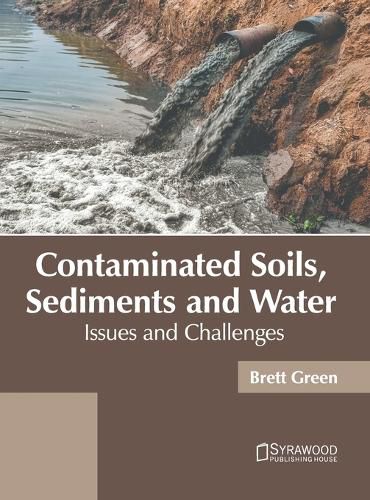Readings Newsletter
Become a Readings Member to make your shopping experience even easier.
Sign in or sign up for free!
You’re not far away from qualifying for FREE standard shipping within Australia
You’ve qualified for FREE standard shipping within Australia
The cart is loading…






Soil contamination, also called soil pollution and land pollution, is a part of land degradation caused by the spillage, burying or migration of hazardous contaminants from local waste, untreated industrial effluents, agrochemicals, manufacturing wastes and other human-made activities or substances into the soil ecosystem. Industrial activity, agricultural chemicals and improper waste disposal are the leading causes of soil contamination. Sediments refer to silt, loose sand, clay and other soil particles that are present at the bottom of a water body. Sediments are produced by decomposition of animals and plants, as well as soil erosion. When sediments are mixed with water, it leads to water contamination. The risk of flooding increases when sediments clog catch basins and storm drains, which are used to divert water away from residential areas and roads. Soil and water contamination, both have a negative impact on the health of plants, animals and humans. This book aims to shed light on some of the unexplored aspects of soil and water contamination. Students, researchers and experts associated with this field will benefit alike from it.
$9.00 standard shipping within Australia
FREE standard shipping within Australia for orders over $100.00
Express & International shipping calculated at checkout
Soil contamination, also called soil pollution and land pollution, is a part of land degradation caused by the spillage, burying or migration of hazardous contaminants from local waste, untreated industrial effluents, agrochemicals, manufacturing wastes and other human-made activities or substances into the soil ecosystem. Industrial activity, agricultural chemicals and improper waste disposal are the leading causes of soil contamination. Sediments refer to silt, loose sand, clay and other soil particles that are present at the bottom of a water body. Sediments are produced by decomposition of animals and plants, as well as soil erosion. When sediments are mixed with water, it leads to water contamination. The risk of flooding increases when sediments clog catch basins and storm drains, which are used to divert water away from residential areas and roads. Soil and water contamination, both have a negative impact on the health of plants, animals and humans. This book aims to shed light on some of the unexplored aspects of soil and water contamination. Students, researchers and experts associated with this field will benefit alike from it.